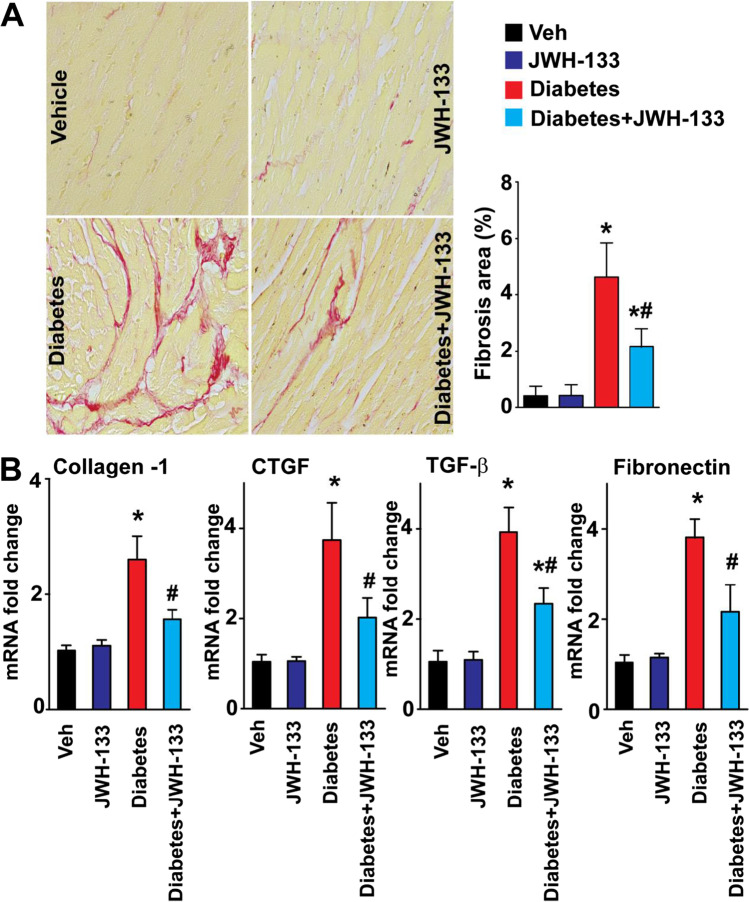Correction to: GeroScience
10.1007/s11357-022-00565-9
This erratum is being published to correct the versions of Figures 8 and 9. Upon the online publication of the accepted version of the article the authors discovered a technical error with the submitted files. The correct versions of the Figures 8 and 9 are shown below. All other parts are unchanged. The authors regret the errors.
Fig. 8.
Effect of JWH-133 treatment on diabetesinduced myocardial fibrosis in mice. A Representative images show Sirius red staining of the myocardial paraffin sections. The adjacent panel shows the quantification of fibrosis. *P < 0.05 vs. Veh/JWH- 133; #P < 0.05 vs. diabetes, n = 6. B Depicts the mRNA expression of fibrosis markers in the myocardial tissue samples. *P < 0.05 vs. Veh/JWH-133; #P < 0.05 vs. diabetes, n = 6
Fig. 9.
Effect of diabetesinduced fibrosis in the myocardial tissues of CB2R−/−mice. A Representative images show Sirius red staining of the myocardial paraffin sections. The adjacent panel shows the quantification of fibrosis. *P < 0.05 vs. WT-vehicle treated animals; #P < 0.05 vs. diabetes, n = 6. B Depicts the mRNA expression of fibrosis markers in the myocardial tissue samples. *P < 0.05 vs. WT-vehicle treated animals; #P < 0.05 vs. WT diabetic animals, n = 6
Footnotes
Publisher's note
Springer Nature remains neutral with regard to jurisdictional claims in published maps and institutional affiliations.




